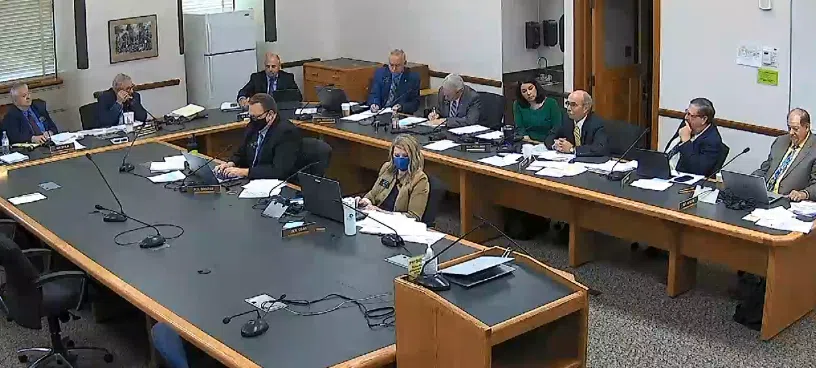BISMARCK, N.D. – A panel of lawmakers on Thursday substantially completed a draft of North Dakota’s new legislative map that creates three new districts in the state’s fastest-growing areas but erases an equal amount in population-lean rural regions.
The preliminary plan unanimously approved by the Republican-controlled committee also forces several incumbent lawmakers to run against each other to keep their jobs, including the Democratic Senate minority leader and the GOP House majority leader.
Finley GOP Rep. Bill Devlin, chairman of the committee, said the panel of 14 Republicans and two Democrats will return to the Capitol twice next week to “tweak” the plan and consider dividing up an oil-rich Indian reservation into separate House districts.
The redistricting plan was drafted over the past several weeks. The task was required due to population shifts shown by the 2020 federal census. Each district is supposed to include approximately the same number of people, although small variances are allowed. The principle is called, “one person, one vote,” and is intended to give each district similar voting power in the Legislature.
The new map avoids splitting up the majority of North Dakota’s 53 counties among separate districts. Devlin said one of the redistricting committee’s goals was to keep counties intact when possible.
North Dakota’s population is estimated at a record 779,000, up almost 16% during the last decade, but most of the state’s rural legislative districts continued losing residents, according to census data.
The panel focused on keeping 47 districts, rather than increasing or reducing the size of the Legislature. Each district is represented by two House members and a senator, which gives the Legislature 141 members.
Lawmakers added new three new districts in and around the state’s biggest city of Fargo, and Williston and Watford City in the heart of the state’s oil patch. Cass County, which grew more than 20% in the past decade, would have 11 districts within its borders with the additional legislative district, under the proposed map. Williams County, which contains Williston, saw its population increase 83% to almost 41,000 people in the past decade with the explosion of oil development in the region. Neighboring McKenzie County, which contains Watford City, also would gain a district.
The depopulation of much of rural North Dakota made the work of the committee especially difficult in determining where districts would be eliminated. The panel chose to scrub a pair of districts in northeastern North Dakota, and one in the southeastern part of the state.




